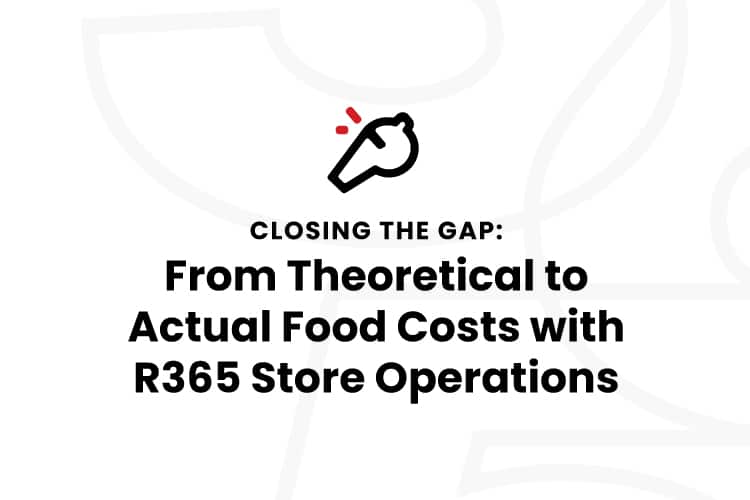April 22 marks the 52nd annual Earth Day, a global holiday that serves as a reminder to protect the environment, restore damaged ecosystems, and live a more sustainable life.
Assessing your restaurant’s environmental impact is a great way to celebrate Earth Day. The idea of “going green” in our industry can seem overwhelming. However, there are small day-to-day activities that restaurant operators can practice that can collectively make a huge impact on your environmental footprint while also improving your bottom-line.
Here are 4 simple solutions to start your journey of going green:
Shop locally
According to LocalHarvest.org, the average commute for fruit and vegetables in the United States is 1500 miles. For that reason, commercially grown fruit and veggies are engineered to withstand travel over long distances. Local sourcing will help your produce maintain its appearance, taste, and nutrients without any bioengineering. And customers will take notice!
Locally sourced meat and seafood continues to be a growing restaurant trend that may bring in additional sales and greatly reduces the gas and oil used to ship product across far distances.
Worried about local farmers prices? It’s true that small farms often struggle to compete with the deep discounts offered by major wholesale food distributors, but you’ll often find that their prices aren’t always that much higher.
And using local foods can also be a major selling point for restaurants. Not only are restaurant patrons willing to pay more for meals prepared with produce and meat from local providers, the proportion of customers preferring local meals actually increases when the price increases (based on a study performed by international researchers from the School of Hospitality Management at Penn State).
Reduce food waste
According to FoodPrint, approximately 4-10% of food purchased by restaurants is wasted before reaching the consumer. US restaurants generate an estimated 22 to 33 billion pounds of food waste each year, much of this waste is perfectly edible and nutritious.
The key to reducing food waste lies in prevention. You can’t waste food that was never ordered, prepped, or served in the first place. Fortunately, we can use technology to guide us through alleviating the issue of food waste. Better inventory management and improved sales forecasting will not only reduce waste, but it will also do wonders to improving your bottom line.
Analyzing your actual vs. theoretical (AvT) food costs is key to reducing pre-consumer food waste. By examining your AvT food cost variance, you can learn the “why” of food waste, e.g., prep mistakes, kitchen portioning errors, server errors, etc. AvT can help you track where your biggest food waste is happening. Take a deep dive into the items that have the largest variance to find the cause of waste.
Also, keep a waste journal. Keeping food waste journal can identify trends that you can act on. For example, if your waste journal says that you’re throwing out a gallon of homemade ranch dressing every two days, there is a problem in the amount of ranch you’re prepping.
Switch to eco-friendly packaging
Rather than relying on one-use plastics, since they are known to float along the surface of bodies of water, kill marine life and wildlife, and release methane and ethylene, among other issues, many operators are turning to a sustainable packaging model.
Fortunately, there are a lot of great options when it comes to eco-friendly takeout containers and paper products. Reusable, recyclable, and compostable are the three major categories that fall under the sustainable packaging category. Do some research to decide what is best for you based on the kind of food and beverages that you serve. Your takeout packaging choices directly affect your restaurant’s image and reputation, so it is important to choose containers that ensure meals arrive to the customer at the right temperature and looking delicious.
Don’t become discouraged that some options cost more than your current products. According to a study by Restaurant Dive, 56% of consumers show a preference toward restaurants that use eco-friendly packaging and 43% of diners are willing to pay more for restaurant takeout that prioritize sustainability efforts.
Conserve water
Water conservation is a growing concern, especially in states affected by water shortages such as California, Colorado, and New Mexico. Water shortages can lead to wildfire, drought, and warmer temperatures. Yet, water is essential for many aspects of daily life including restaurant operation. Per this Powerhouse Dynamics whitepaper, restaurants are estimated to use and average of 5,800 gallons of water per day. That translates into over 2 million gallons of water per year. At a not uncommon rate of .4 cents per gallon, this level of usage translates into more than $8,000 per year.
The EPA states that water used in restaurants account for about 15% of the total water used in all commercial and institutional facilities in the U.S. Here is a breakdown of the usage by area:
- 52%: Kitchen/dishwashing
- 31%: Domestic/Restroom
- 12%: Other
- 4%: Landscaping
- 4%: Other
There are long-term facilities changes that restaurants can make to become greener such as low flush toilets, energy star appliances, and energy efficient ventilation. However, there are smaller steps that you can take that will make an immediate impact on your restaurant’s water usage. Try out these water conservation ideas:
- Defrost frozen food in the cooler instead of placing it under running water
- Only run the full racks of dishes
- Turn off continuous water flows in areas such as food prep and to try wash vegetables and fruit at the same time
- Encourage customer and employee participation by posting bathroom mirror stickers encouraging water conservation
Conclusion
Now is the time to start taking steps toward going green help people, planet, and profit. While many recommendations related to conservation involve the adaptation of efficient technologies and systems, there are many simple behavioral changes that can add up to big changes. Educating your team to implement and follow these tips can lead to both a greener planet and greater savings.
If you’re interested in reducing your restaurant’s footprint while increasing your profitability, consider an all-in-one restaurant management system. Restaurant365 incorporates restaurant accounting software, restaurant operations software, inventory management software, payroll + HR software, and scheduling software into a cloud-based platform that’s fully integrated with your POS system, as well as to your food and beverage vendors, and bank.



